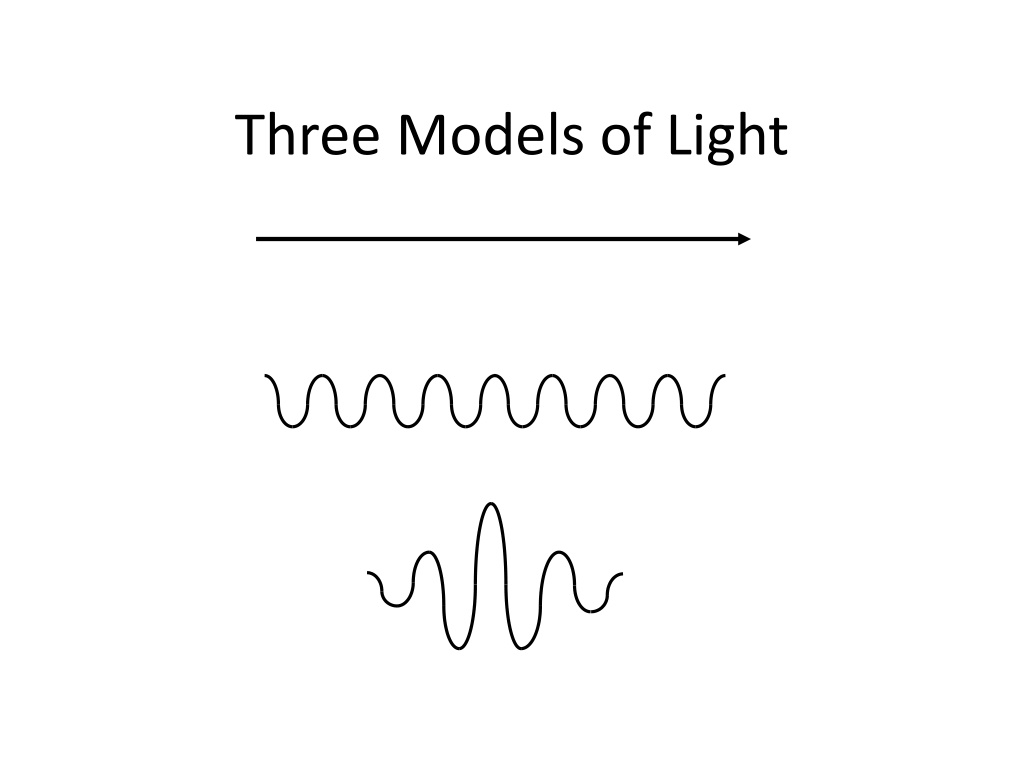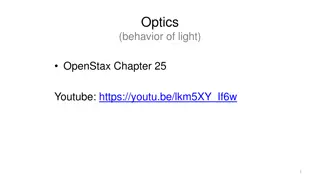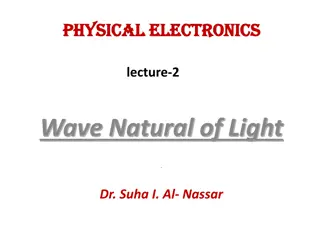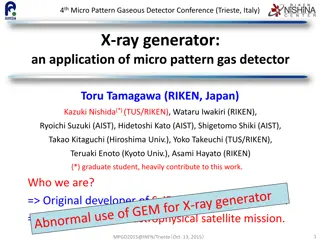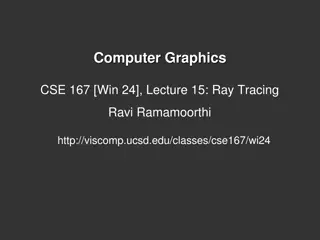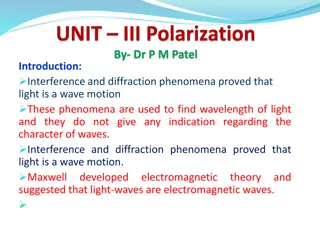Exploring Models of Light: Ray Model and Wave Model
This informative content delves into the Ray Model of Light, discussing how light travels in straight lines known as rays and how it can be made visible. It also explores the Wave Model of Light, covering topics like diffraction and the reasons why we often do not notice it. Additionally, the text touches on the use of rays in predicting images formed by mirrors, lenses, and pinhole cameras. Overall, it provides a comprehensive overview of key concepts related to the behavior of light.
Download Presentation

Please find below an Image/Link to download the presentation.
The content on the website is provided AS IS for your information and personal use only. It may not be sold, licensed, or shared on other websites without obtaining consent from the author. Download presentation by click this link. If you encounter any issues during the download, it is possible that the publisher has removed the file from their server.
E N D
Presentation Transcript
Laser light is shone on a wall. You can see a spot of light on the wall, but you can t see anything between the pointer and the spot. Why? You can only see light, if it goes into your eye.
How can the beam be made visible? Light travels in straight lines, called rays.
How does a pinhole camera work? Rays can be used to predict what images will form.
Grade 10 science also deals with the images formed by mirrors (curved and flat), by refraction at flat surfaces and the curved surfaces of lenses. Why does it make sense to start with the images of pinhole cameras?
Diffraction: You have two pencils held together with elastics with a slight gap in between. You look through the vertical gap at a laser spot. What will it look like as the gap is squeezed? A) unchanged B) thinner C) wider D) it depends
Diffraction: We usually don t notice diffraction because light A) has very small wavelengths C) travels very fast B) has very big wavelengths D) travels very slowly Rays can be used to predict what images will form.
